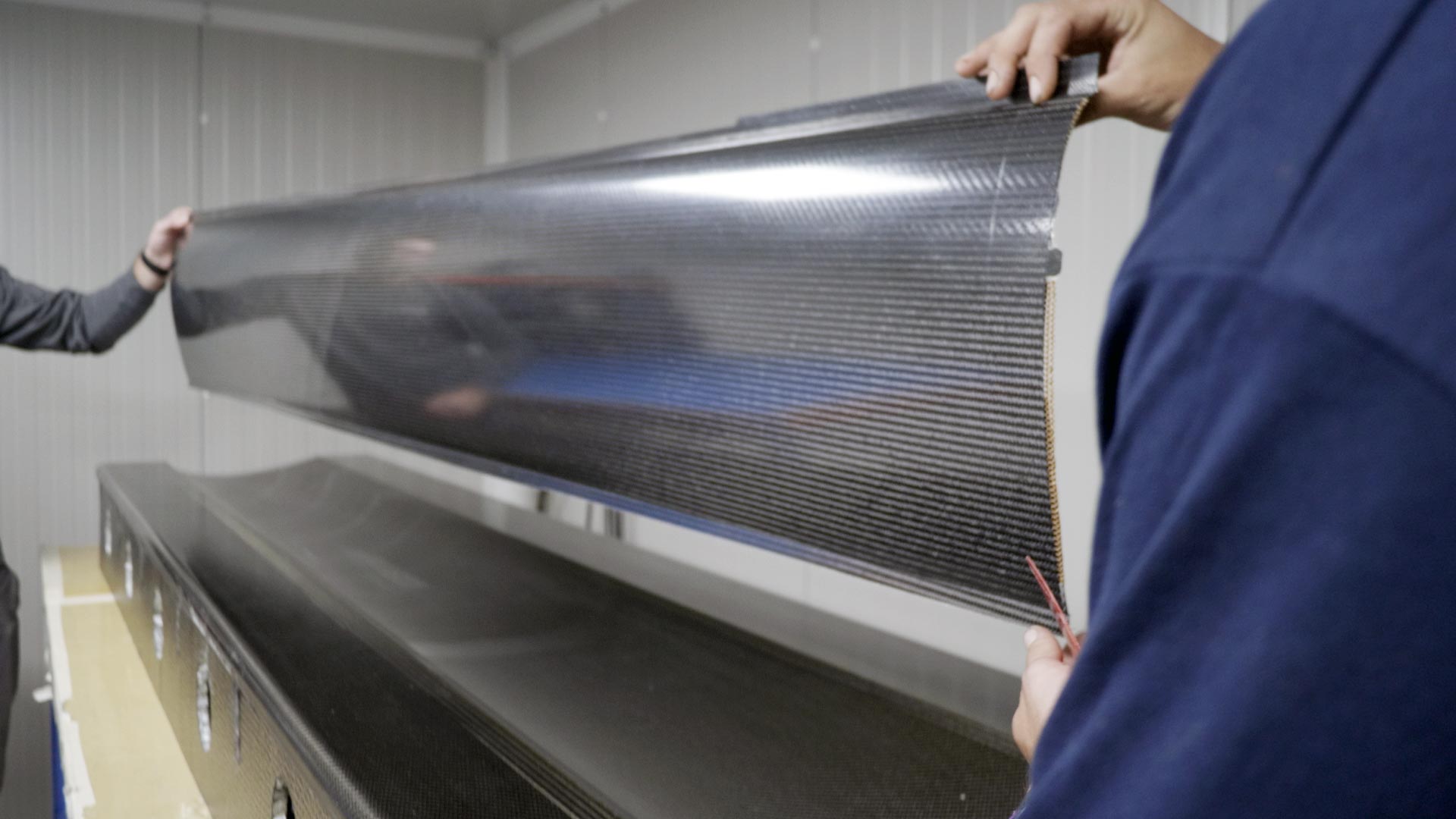Composite materials are revolutionising various industries thanks to their unique properties. These materials, formed by combining two or more distinct elements, offer advantages that traditional materials cannot match. From aerospace to automotive, and construction to sports equipment, composites are changing the game.
In the ever-evolving world of material science, the comparison between traditional and composite materials is a topic of significant importance and interest.
Understanding these differences is crucial in an era where material choice can significantly impact the efficiency, sustainability, and innovation of a project or product.
Table of Contents
What are Composite Materials?
Composite materials are engineered by combining two or more distinct substances to create a material with superior properties compared to its individual components. These materials typically consist of a matrix (binder) and reinforcement (fibres or particles). The matrix holds the reinforcement together, while the reinforcement adds strength and rigidity. Common examples include fibreglass (glass fibres in a polymer matrix), carbon fibre composites, and reinforced concrete.
The key to the success of composite materials lies in the synergy between the components: the matrix protects the reinforcement from environmental damage and transfers stress to the fibres, while the reinforcement contributes to tensile strength and rigidity. This combination results in materials that are lightweight yet strong, durable, and resistant to various forms of wear and tear, making them invaluable in industries like aerospace, automotive, construction, and sports equipment manufacturing.
Composites can be tailored to specific needs by varying the type, amount, and arrangement of the reinforcement and matrix materials, allowing for a wide range of properties and uses. This customisation makes composite materials incredibly versatile and suited for specialised applications where traditional materials may not be ideal.

Benefits of Composite Materials
This article explores the myriad benefits of composites, from their exceptional strength-to-weight ratio, enhancing fuel efficiency in aerospace and automotive industries, to their remarkable resistance to corrosion, ideal for marine environments.
Discovering how their flexibility in design paves the way for innovative applications and how their long-term durability offers cost-effective solutions across various sectors. Let’s uncover the multifaceted advantages of composite materials, a key driver in technological and industrial progress.
Enhanced Strength and Durability Benefits
Composite materials are renowned for their exceptional strength and enhanced durability, setting a new standard in material engineering. These materials, by virtue of their composition, provide a robustness that surpasses traditional materials like metal and wood. The interplay between their constituent elements results in a composite that withstands high stress and strain without compromising its integrity. This enhanced durability makes composites an ideal choice for applications where longevity and reliability are paramount, such as in aerospace, automotive, and construction industries.
Composite materials, like carbon fibre reinforced plastics, boast an unparalleled strength-to-weight ratio. This means they provide the same or better strength as traditional materials like steel or aluminium, while being significantly lighter. This property is crucial in industries like aerospace and automotive, where weight reduction can lead to better fuel efficiency and performance.
Lightweight and Improved Performance
One of the most striking benefits of composite materials is their lightweight nature, which significantly enhances performance. In sectors like automotive and aerospace, the reduction in weight leads to greater fuel efficiency and higher speed capabilities. For instance, replacing conventional materials with composites in aircraft construction not only reduces the overall weight but also improves aerodynamic efficiency. This lightweight characteristic is equally beneficial in sports equipment, where it enhances the performance and ease of use for athletes.
From sports equipment like high-performance bicycles and golf clubs to aircraft and spacecraft, the reduced weight of composites directly correlates with enhanced performance, agility, and speed.
In automotive design, for example, lighter vehicles require less energy to move, leading to fuel savings and reduced emissions.
Versatility in Applications
The versatility of composite materials is unmatched, with applications spanning across a diverse range of industries. This versatility stems from the ability to customise composites to specific requirements, whether it’s for electrical insulation, thermal resistance, or specific strength-to-weight ratios. This broad-spectrum usage is evident in fields as varied as renewable energy, where composites are used in wind turbine blades, to medical technology for lightweight and strong prosthetic limbs.
Resistance to Environmental Advantages
Composite materials offer superior resistance to various environmental factors, including extreme temperatures, moisture, and corrosive chemicals. Unlike metals, composite materials do not corrode easily. This resistance is crucial in industries like marine and chemical processing, where materials are regularly exposed to harsh conditions. Composites maintain their structural integrity and appearance over time, even in the face of prolonged exposure to challenging environments, making them a reliable choice for long-term applications.

Advancements in Manufacturing Techniques
The field of composite materials is at the forefront of manufacturing innovation. Advancements in techniques such as 3D printing, automated fibre placement, and resin transfer moulding have revolutionised the way composites are produced.
These cutting-edge methods allow for more precise, efficient, and cost-effective production, broadening the scope and accessibility of composite materials. As technology continues to evolve, it opens up new possibilities for complex shapes and designs that were previously unattainable.
Aesthetics and Design Flexibility
Composites are not just about functional superiority; they also offer remarkable flexibility and aesthetics in design. Their ability to be moulded into complex shapes and structures enables designers and architects to push the boundaries of creativity.
From sleek, aerodynamic components in automotive design to innovative and aesthetically pleasing architectural structures, composites offer a combination of strength, flexibility, and beauty. This fusion of functional and aesthetic qualities makes composites a material of choice for designers looking to achieve both performance and visual appeal.

Traditional vs Composite materials
Traditional materials like steel, wood, and concrete have laid the foundation of construction and manufacturing for years. However, with the advent of composite materials, such as fibreglass, carbon fibre, and reinforced plastics, the landscape of material science has undergone a transformative change.
1. Performance
Composites often outperform traditional materials in terms of strength, weight, and durability. They are more resistant to environmental factors and can be engineered for specific applications.
Traditional materials are known for their strength, durability, and in some cases, flexibility. However, they often carry limitations such as weight, corrosion susceptibility, and environmental impact.
2. Cost and Manufacturing
Traditional materials generally have well-established, cost-effective manufacturing processes. Composites, while sometimes more expensive, offer long-term cost savings through durability and efficiency.
3. Industry Applications
Traditional materials are used in everything from building infrastructure to manufacturing vehicles and everyday household items. While, composite materials are widely used in advanced industries such as aerospace, automotive, sports equipment, and increasingly in construction and marine applications.
4. Environmental Impact
Composites can be more environmentally friendly by reducing weight and improving energy efficiency, though concerns remain about their recyclability compared to some traditional materials.
5. Innovation and Manufacturing
The development of composites is closely linked with technological advancements, leading to new applications and improvements. Traditional materials, while still evolving, don’t quite match the pace of innovation seen in composites.
Summary
In summary, the advantages of composite materials are vast and varied. Their strength, durability, lightweight nature, and versatility make them a superior choice in numerous applications. As manufacturing techniques continue to advance, we can expect to see even more innovative uses for these remarkable materials, pushing the boundaries of what’s possible in design and engineering.
Understanding these differences between traditional and composite materials is key to making informed decisions in material selection, balancing factors like cost, performance, and environmental impact to meet the specific needs of a project or product.
Are you looking for help with composites? Since 2008 Piran Composites have been at the forefront of composite technology.


